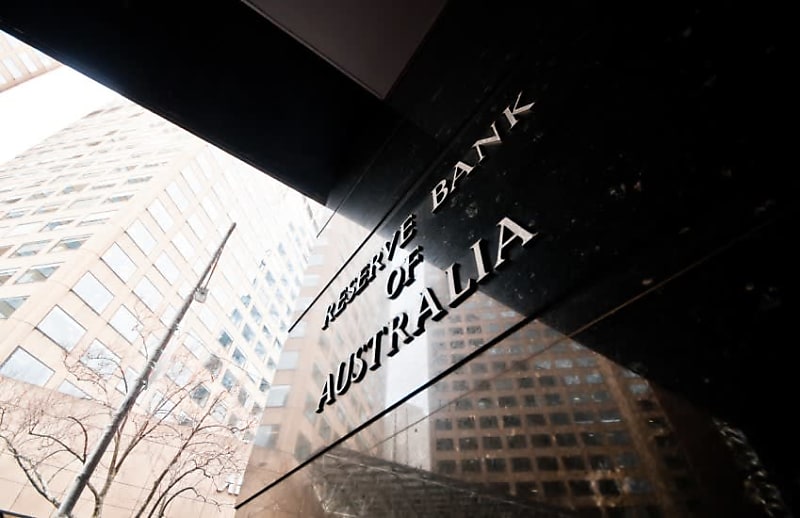RBA’s shock rate hold set to ‘cloud’ business sentiment
BusinessSmall businesses will have to continue holding out for relief from persistent inflation pressures and rising operational costs following the central bank’s surprise interest rate hold.

Tuesday’s interest rate hold at 3.85 per cent will hit Australia’s grappling small business community and apply pressure to the government's upcoming productivity roundtable as disappointment ripples through the community.
The Reserve Bank’s decision to keep the interest rate stagnant would have likely been a blow to small business owners, elevating pressure on the government to provide a necessary boost, CPA Australia has said.
The accounting body noted the upcoming economic roundtable scheduled for August would be under increased pressure to provide suitable reforms to help the community navigate and overcome the current economic climate.
Gavan Ord, CPA business lead, said many small businesses looked for further rate cuts and genuine productivity reform as they were essential in restoring confidence and stimulating growth.
“A lower interest rate environment would open up more options for small businesses who could choose to renegotiate loans and reduce their debt burdens, or take the opportunity to invest in growth and perhaps take on more workers,” he said.
“But the biggest boost for small businesses right now would be substantive, long-term commitments from the government to revitalise the business environment by removing unnecessary regulatory burdens and fostering entrepreneurship. This must be a key deliverable from the economic reform roundtable in August.”
In a statement released on Tuesday afternoon, Treasurer Jim Chalmers said the RBA’s decision was not the result that millions of Australians hoped for, or what the market expected.
Though not exclusively outlined as a topic for the upcoming roundtable, Chalmers said his economic plan was focused on easing the cost of living and tackling inflation while maintaining jobs.
“We recognise that people are still under pressure and there’s more work to do in our economy and that’s why the cost-of-living relief that we’re rolling out right now is so important.”
“The global economy is uncertain and unpredictable but the progress we’ve made together means we’re well placed and well prepared to weather the storm. We are managing this difficult global environment at the same time as we are building a more sustainable, productive and resilient economy.”
Business confidence was set to remain on a shaky path, with employers advised they would have to continue to deal with increased costs, super contributions and wages.
Ben Thompson, chief executive of Employment Hero, said for employers already adjusting to higher super contributions and minimum wage increases, the decision offered little breathing room.
“I expect we'll see lower business confidence and lower hiring rates... especially given it also comes in the same week most businesses are processing their first pay runs following the Fair Work Commission’s 3.5 per cent increase to minimum award wages, a direct cost increase for hundreds of thousands of employers,” Thompson said.
“Business confidence continues to be shaky, and without policy support or clearer signals, we risk stalling just as momentum was starting to return, particularly for younger workers and casual roles that only recently began to recover.”
Regarding its hold, the RBA said it had done so based on the monthly CPI indicator having been marginally stronger than expected, a rebound in financial markets, the tightness of labour markets, and weak productivity.
Shane Oliver, AMP chief economist and head of investment strategy, said despite the cash rate hold, the RBA held a dovish bias as the decision was based on timing, rather than the direction for rates.
According to Oliver, AMP was wrong about its expectation for the July cut, yet predicted further cuts to occur in August, November, February and May.
“While we were wrong in our expectations for a cut in July and the RBA is proving to be even more gradual than we had come to expect, we continue to see further rate cuts as we see economic growth picking up more slowly than the RBA is forecasting, underlying inflation is likely to be confirmed around the 2.5 per cent target and monetary policy remains tight,” he said.
“So, despite the surprise decision to leave rates on hold this month, we continue to see the RBA taking the cash rate back to around neutral with more cuts to 2.85 per cent. It’s just that it’s now going to take a bit longer and so we are forecasting 0.25 per cent rate cuts in August, November, February and May.”
To further add to the concern surrounding businesses, Devika Shivadekar, RSM Australia economist, said the rate hold could “cloud” business sentiment and slow down improving business conditions.
“A lot of business confidence has been on the back of expectations that the RBA is finally on an easing path. However, today’s decision from the Board to hold the cash rate at 3.85 per cent may see any further recovery in conditions deferred until the monetary policy shifts towards stimulating growth,” she said.
"This abrupt shift in tone is difficult to reconcile and risks undermining confidence in the Bank’s deliberations. If the data has only improved since the last meeting, the decision to pause rather than act seems out of step with the RBA’s own stated concerns.
"Such inconsistency in signalling leaves markets, businesses, and households struggling to understand the true policy framework guiding the Bank’s choices, further clouding sentiment at a time when clear, steady guidance is sorely needed."
Louise Southall, Xero economist, added that the rate decision would have severely disappointed small business owners in light of current economic conditions in Australia and worldwide.
“It is still a challenging trading environment, made more so by the high level of uncertainty around the outlook for the global and Australian economies. This lack of clarity was once again highlighted by the RBA in its post-meeting comments,” Southall said.
“It is also worth remembering that it takes time for the benefit of lower interest rates to flow through to small businesses. In Xero's May poll, 85 per cent of respondents said they were yet to see a direct benefit from lower interest rates. This means small business owners need to continue to stay on top of cash flow, ensure they get paid as quickly as possible and keep an eye on costs.”




